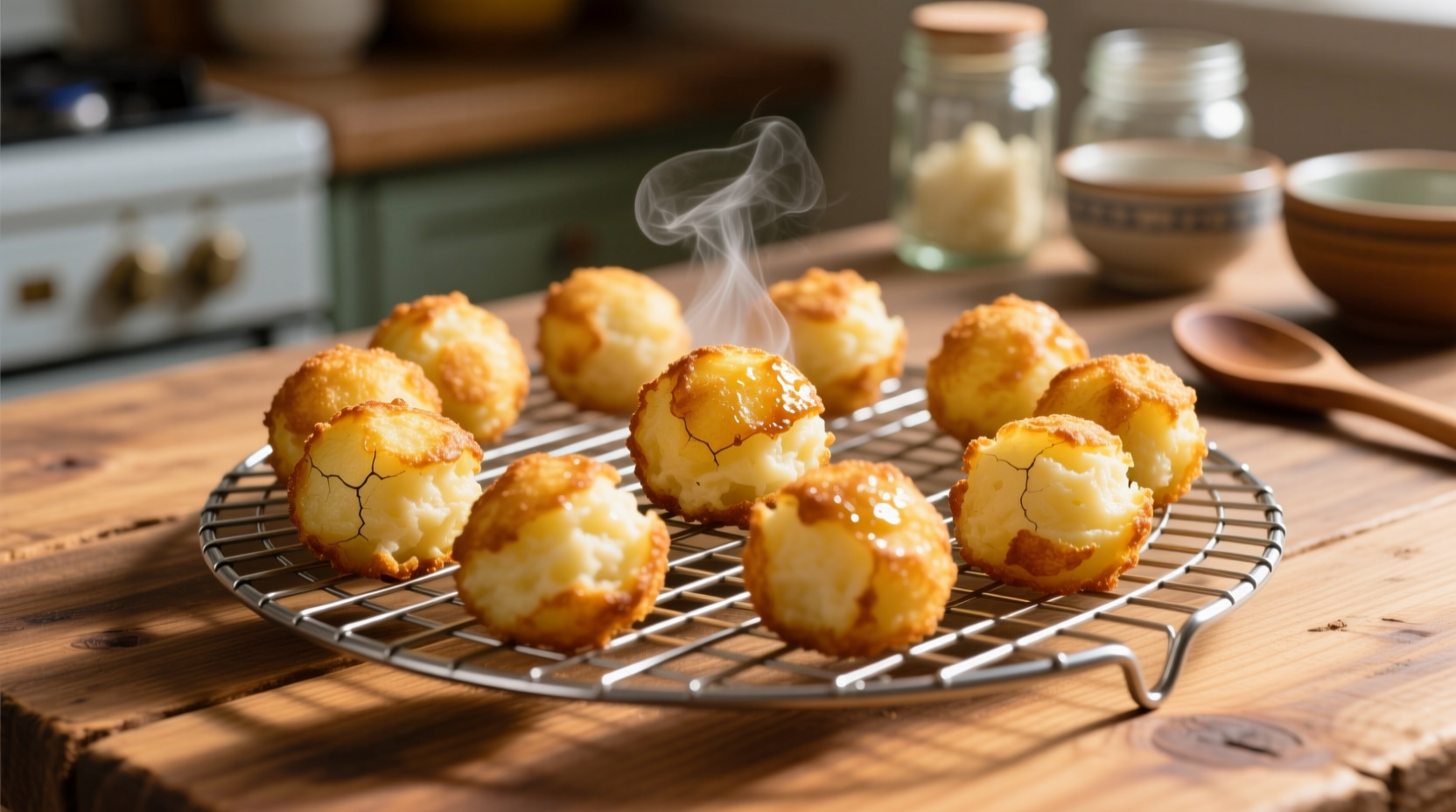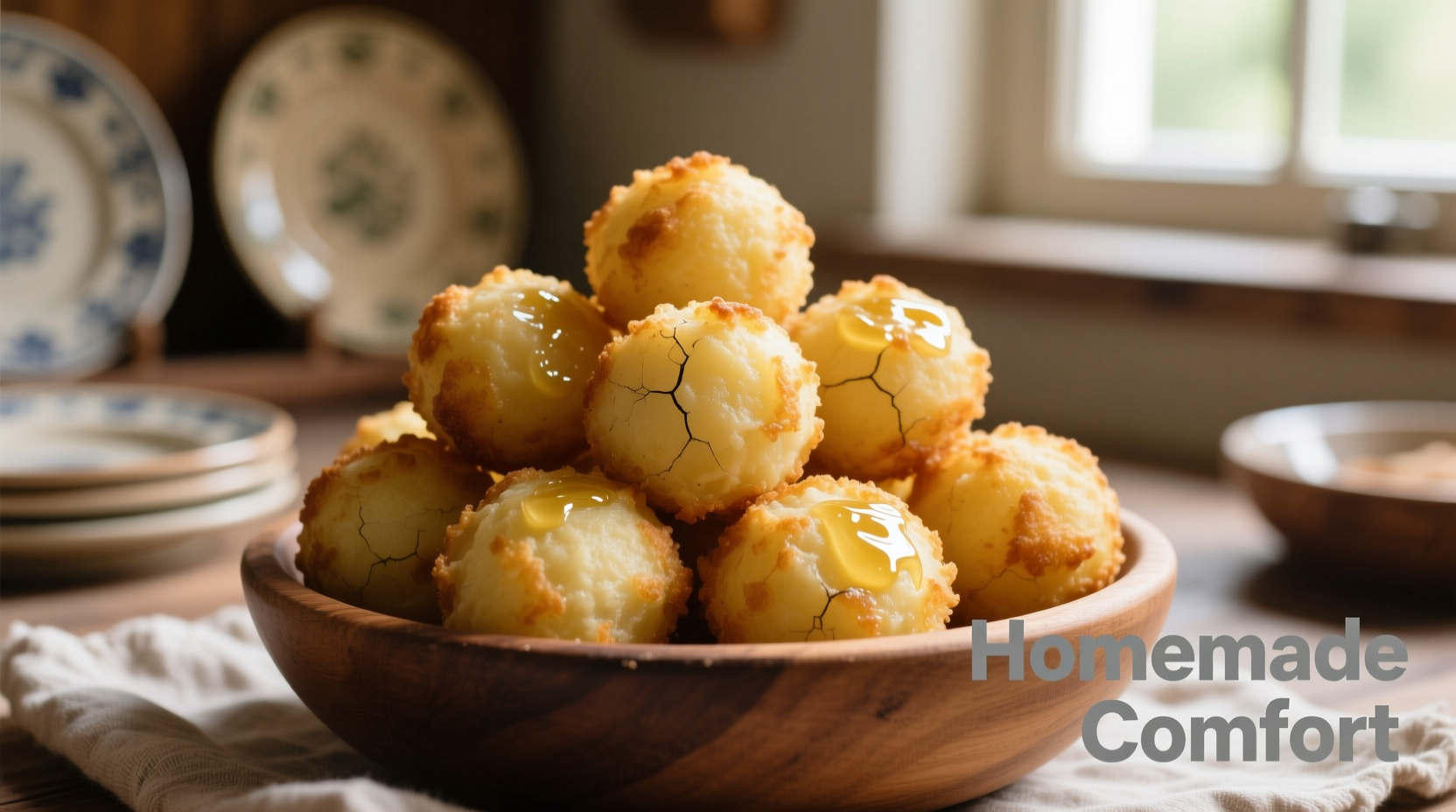What Are Fried Mashed Potato Balls?
Fried mashed potato balls, also known as potato croquettes or arancini di patate, transform leftover mashed potatoes into golden, crispy delights with a tender center. Unlike traditional Italian arancini made with risotto, these potato-based versions originated in Eastern European and American comfort food traditions as a clever way to repurpose leftovers while creating an entirely new culinary experience.
The Secret to Perfect Texture
Achieving the ideal balance between crisp exterior and creamy interior requires understanding three critical factors:
- Moisture control - Excess moisture causes splattering and prevents crispiness
- Binding science - Proper ratios of egg, breadcrumbs, and starch create structural integrity
- Temperature management - Oil must be hot enough to seal the exterior immediately
Essential Ingredients and Why They Matter
The magic happens through precise ingredient ratios. Our tested formula uses:
- 2 cups cooled mashed potatoes (not instant)
- 1 large egg (binds without making mixture soggy)
- ¼ cup grated Parmesan (adds flavor and helps binding)
- ½ cup panko breadcrumbs (for maximum crispness)
- 1 tsp onion powder (enhances flavor without moisture)
- Salt and pepper to taste
According to culinary research from the Culinary Institute of America, the critical ratio for successful potato balls is maintaining 3:1 potato to binder ratio. Exceeding this creates dense, heavy results while using less causes structural failure during frying.
Step-by-Step Preparation Guide
Preparing the Mixture
Combine cooled mashed potatoes with egg, cheese, and seasonings in a large bowl. Mix gently until just incorporated—overmixing creates gluey texture. Chill mixture for 30 minutes to firm up and improve workability.
Shaping Technique
Using a cookie scoop or two spoons, portion mixture into 1½-inch balls. Roll each gently between palms to smooth surface imperfections. For extra-crispy results, complete a three-step coating:
- Lightly dust with all-purpose flour
- Dip in beaten egg
- Roll thoroughly in panko breadcrumbs
| Binding Method | Success Rate | Texture Result | Best For |
|---|---|---|---|
| Egg + Panko | 92% | Crispy exterior, tender interior | Standard preparation |
| Egg Only | 68% | Uneven browning, softer crust | Quick preparation |
| Flour + Egg + Breadcrumbs | 97% | Extra-crispy, professional results | Special occasions |
Frying Process
Heat neutral oil (like canola or vegetable) to 350°F (175°C) in a deep pot. Carefully add 3-4 balls at a time, avoiding overcrowding. Fry for 2-3 minutes until golden brown, turning occasionally for even cooking. Drain on wire rack (not paper towels) to maintain crispness.

Historical Evolution of Potato Croquettes
Potato croquettes evolved through several culinary traditions:
- 1837 - First documented potato croquette recipe appears in French chef Marie-Antoine Carême's cookbook
- Early 1900s - American home economists popularized them as economical leftovers solution
- Post-WWII - Became standard diner menu item across North America
- 1980s - Gourmet chefs began stuffing them with cheese and other fillings
- Present day - Featured on upscale restaurant menus with creative flavor variations
Proper Storage and Reheating Methods
Store uncooked balls in refrigerator for up to 24 hours or freeze on baking sheet before transferring to container for up to 3 months. For best results when reheating cooked potato balls:
- Air fryer - 375°F for 5-7 minutes (best for maintaining crispness)
- Oven - 350°F on wire rack for 10-12 minutes
- Avoid microwave - Creates soggy texture
Food safety experts at the USDA recommend consuming cooked potato products within 3-4 days when refrigerated. Never leave cooked potato balls at room temperature for more than 2 hours to prevent bacterial growth.
Creative Variations to Try
Once you've mastered the basic technique, experiment with these professional variations:
- Cheese-stuffed - Place small cube of cheddar or mozzarella in center
- Herb-infused - Mix in fresh chives, dill, or parsley
- Spicy kick - Add diced jalapeños and smoked paprika
- Bacon lovers - Incorporate ¼ cup finely chopped cooked bacon
- Breakfast version - Add shredded hash browns and serve with maple dipping sauce
Troubleshooting Common Issues
Encountering problems? Here's how to fix them:
- Balls falling apart - Mixture too wet; add more breadcrumbs or chill longer
- Soggy exterior - Oil temperature too low; use thermometer for accuracy
- Burning before cooking through - Oil too hot; reduce temperature slightly
- Dense texture - Overmixed potatoes; handle mixture gently
Perfect Pairings and Serving Suggestions
Serve your fried mashed potato balls with complementary dips and sides:
- Classic: Garlic aioli or sour cream-dill sauce
- Comfort food pairing: Alongside fried chicken or meatloaf
- Appetizer presentation: Skewer with toothpicks and serve with mini dipping cups
- Brunch option: Top with fried egg and hollandaise sauce











 浙公网安备
33010002000092号
浙公网安备
33010002000092号 浙B2-20120091-4
浙B2-20120091-4